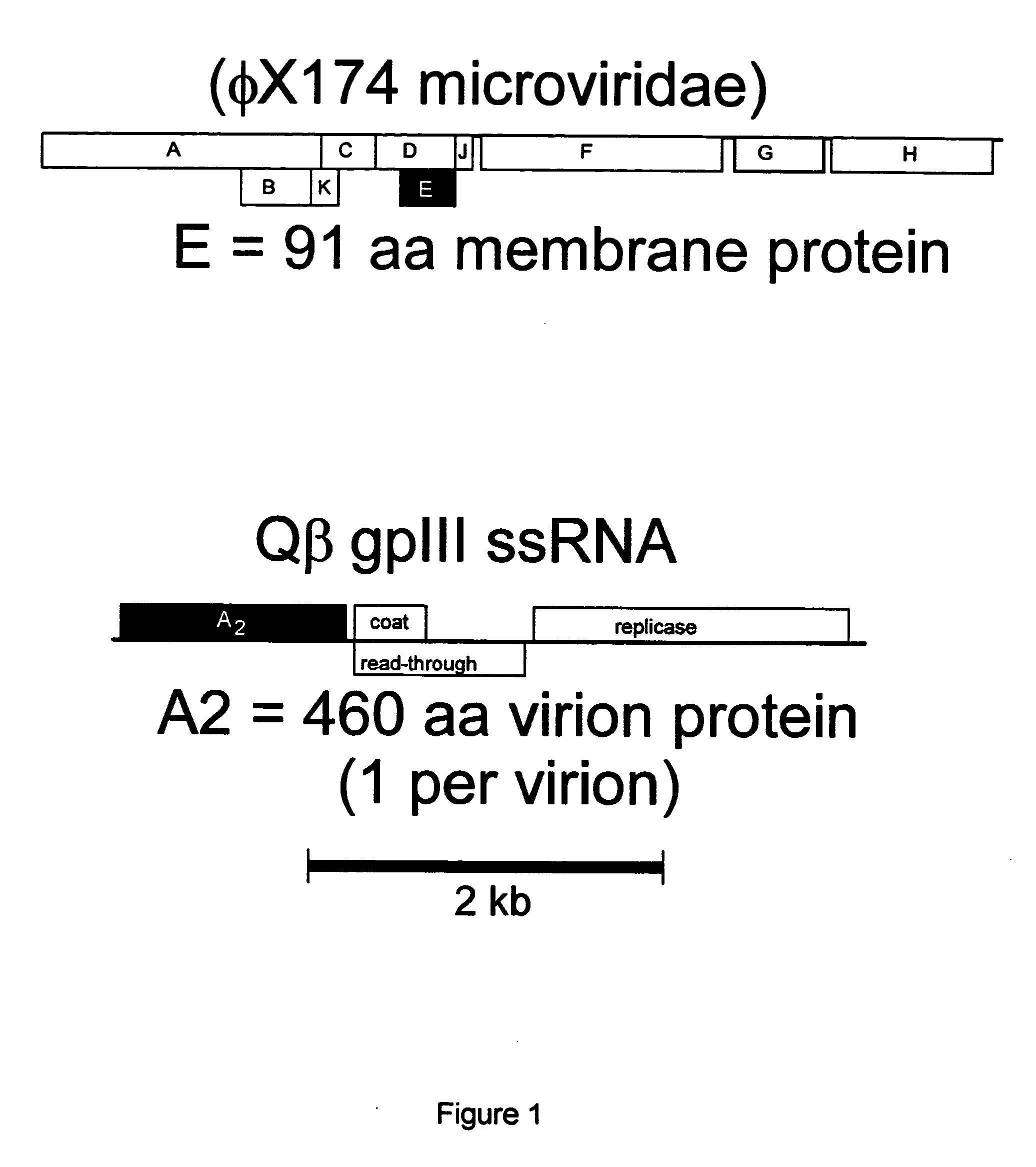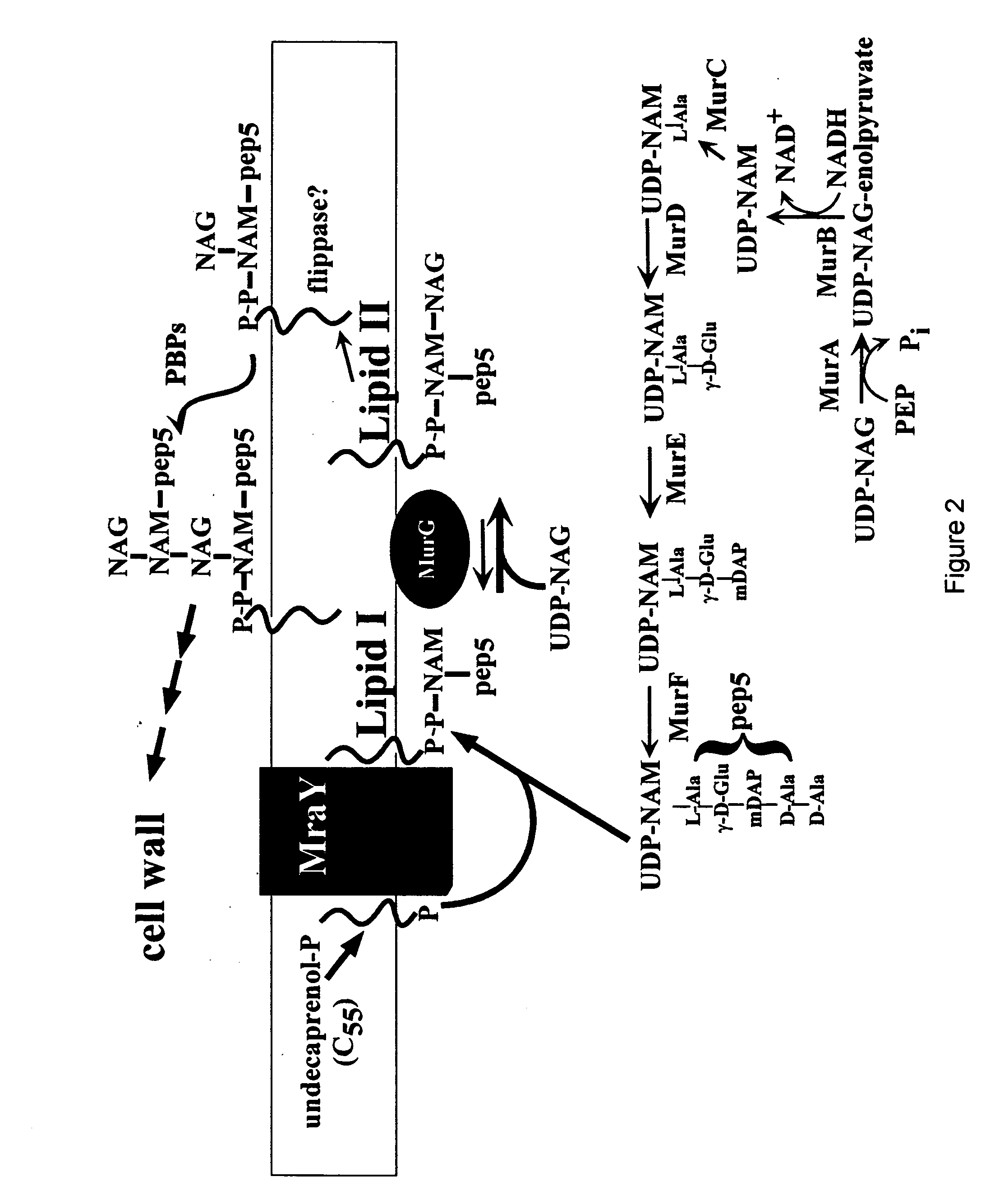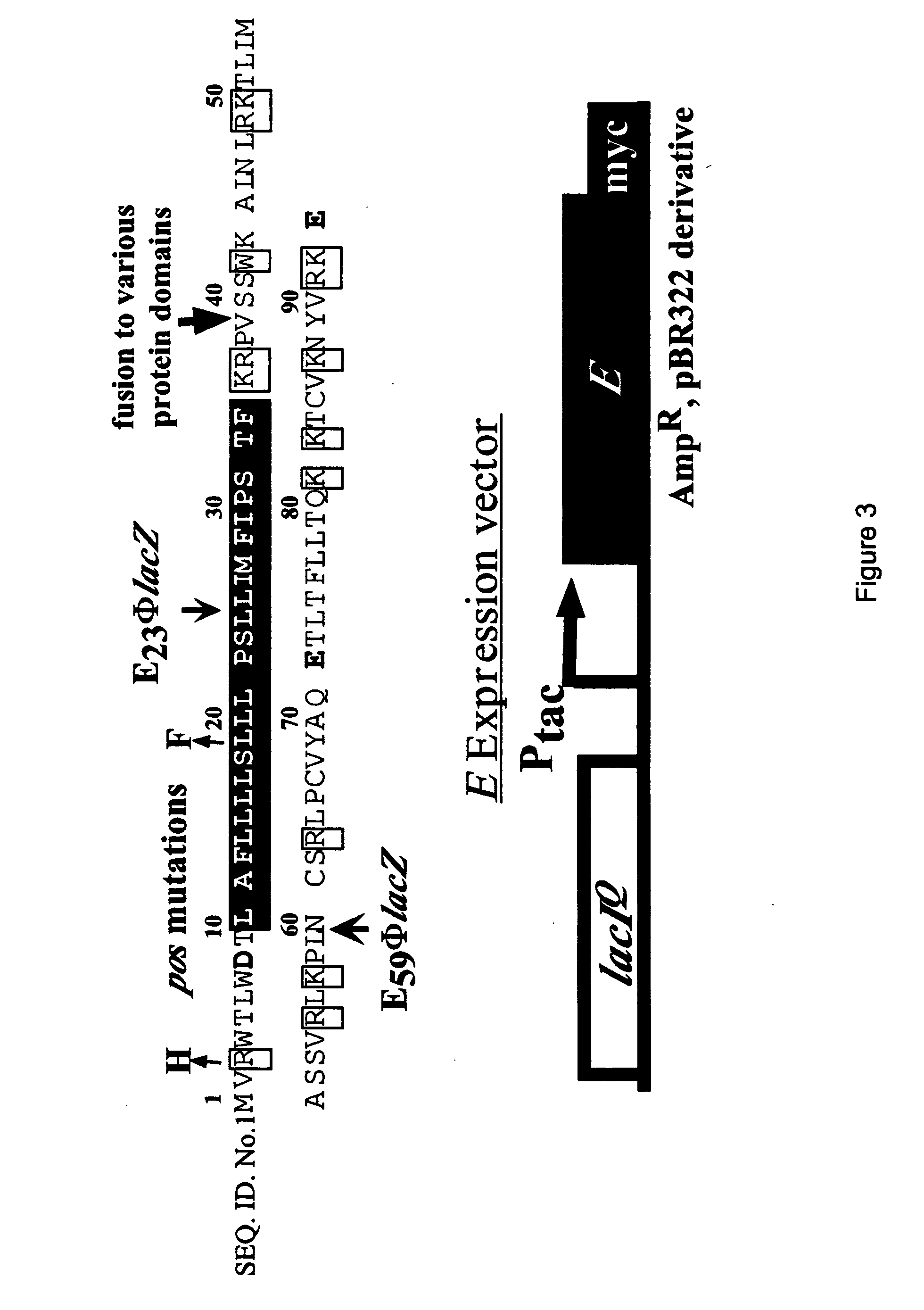Antibiotics based upon bacteriophage lysis proteins
a technology of lysis proteins and antibiotics, applied in the field of polypeptide antibiotics, can solve problems such as raising the issue of how lysis is achieved, and achieve the effect of improving lytic function and reducing toxicity
- Summary
- Abstract
- Description
- Claims
- Application Information
AI Technical Summary
Benefits of technology
Problems solved by technology
Method used
Image
Examples
example 1
DNA Cloning, PCR and Sequencing Methods; Bacterial Strains, Plasmids and Growth Conditions
[0233] All DNA manipulations, including PCR, were performed according to standard and published procedures (Maniatis et. al., 1982 and Smith et. al., 1998) except as detailed in Bernhardt et. al., (2000). φX174Epos4B, referred to as φX174Epos, was isolated as a spontaneous plaque former on a slyD mutant lawn (W. D. Roof., unpublished results). Most plasmids and strains have been described (Bernhardt, et al., 2000). The Epos4B allele contains both the R3H and L19F missense mutations and henceforth will be referred to as Epos. E. coli K-12 strain ET505 (W3110 lysA::Tn10) was the host strain used in the work on MraY inhibition and was obtained from the E. coli Genetic Stock Center (New Haven, Conn.) (www.cgsg.biology.yale.edu). A lysA strain was required to prevent the conversion of added [3H]-DAP to Lys, so that [3H]-DAP can only be incorporated into cell wall and its precursors. The plasmid pEm...
example 2
Genetic Techniques, Transposon Mutagenesis and Methods of Mutant Selection
[0234] Standard bacterial matings were performed essentially as described (Miller, 1992). Triparental matings to generate a merodiploid with eps+ on the chromosome and eps4 on F′104 were performed by mixing 0.5 ml of exponential cultures of KL723 (strain 1), RY7283 (strain 2), and RY7278 (strain 3) and allowing them to stand at 37° C. for 5 h. The desired exconjugants were selected by plating dilutions on LB-Kan-tetracycline (FIG. 7). To generate homozygous eps+ merodiploids RY7281 was used as strain 2. P1 transductions were performed essentially as described (Miller, 1992). φX174Epos phage plating was performed as described (Roof, et. al., 1997).
[0235] MiniTncam transposon mutagenesis was performed on strain RY7285 (the exconjugant selected from triparental matings) by using the delivery phage NK1324 essentially as described (Kleckner, et. al., 1991) except the transposition mixture contained 0.5 ml of a 30...
example 3
Methods of Cell Wall Labeling and Precursor Analysis
[0238] Cell wall synthesis was measured as SDS-insoluble incorporation as follows. For E, ET505 pEmycZK and ET505 pJFlacZK were grown in minimal M9 glucose media in a 250 mL culture flasks at 37° C. to an A550 of approximately 0.3 when a portion of each culture was transferred to a small pre-warned 50 mL flask containing sufficient [3H]-DAP to give a final activity of 5 microC / mL. For A2, ET505 pA2 and ET505 pJFlacZK were used. Constant aeration of all cultures was maintained throughout the experiment. After a 10 min pre-labeling period, both labeled and unlabeled cultures were induced with IPTG. Culture growth was monitored from the unlabeled culture and [3H]-DAP incorporation into cell wall was monitored in the labeled culture as described previously (Wientjes, et. al., 1985) with minor modifications. Briefly, 0.2 mL aliquots were removed at the indicated times and added directly into 0.8 mL of boiling 5% SDS. The samples were b...
PUM
| Property | Measurement | Unit |
|---|---|---|
| temperatures | aaaaa | aaaaa |
| temperatures | aaaaa | aaaaa |
| temperatures | aaaaa | aaaaa |
Abstract
Description
Claims
Application Information
 Login to View More
Login to View More - R&D
- Intellectual Property
- Life Sciences
- Materials
- Tech Scout
- Unparalleled Data Quality
- Higher Quality Content
- 60% Fewer Hallucinations
Browse by: Latest US Patents, China's latest patents, Technical Efficacy Thesaurus, Application Domain, Technology Topic, Popular Technical Reports.
© 2025 PatSnap. All rights reserved.Legal|Privacy policy|Modern Slavery Act Transparency Statement|Sitemap|About US| Contact US: help@patsnap.com



